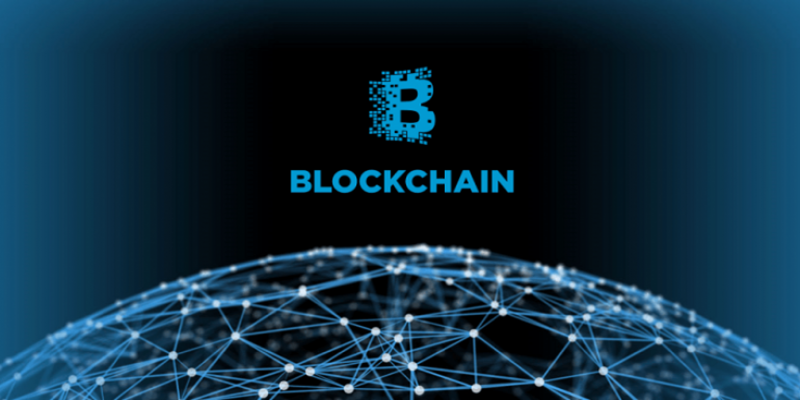Ten Discussions on Decentralized Network Governance
What is governance? The authors define governance as the process of applying any kind of design feature or control mechanism to maintain and guide a system. The following ten viewpoints relate to the base layer public chain network and the applications (smart contracts) running on it, both general and theoretical, as well as specific and practical.
1. Blockchain-related technological and institutional innovations are part of a maturing phase of IT transformation that includes the emergence of IT-native socioeconomic organizational forms that are digital, global, and increasingly decentralized and automation.
It is in the later stages of technological change that its key technologies begin to change the institutional structure of society. Blockchain and related innovations are part of a broader trend towards digitization, computerization and automation - a world in which more and more systemically important processes rely on formal rules of agreement, tending to Coordinate more efficiently. While destructive on the surface, this trend is part of the evolution of an earlier organizational form that sociologists refer to as bureaucracy. But the pervasive rule-making in managing information and facilitating transactions related to that information is no longer human managers, but is increasingly being done by distributed networks of machines, some of which have global reach. sexual.
2. Decentralized networks are collections of multi-spheres - social arenas of symbolic and material production in which interested participants interact with resources specific to the network in providing and consuming products and services in the network Competition and cooperation.
An important prerequisite for framing a field is socially distributed information about resources, and at least some shared understanding of why those resources are valuable. The structure of a particular domain is determined by the distribution of these resources and extends to the relationships between the entities that make up the entire domain. In a decentralized network, this includes everyone involved in investing in, building, operating, using, or otherwise participating in the network. Governance is a process embedded in the network structure, initially determined by its core personnel. Subsequent actions of network participants either reinforce or challenge the existing structure, increasing or decreasing the amount and value of available resources. The structural evolution of a network is strongly influenced by the network's social norms and rules, including those specified in associated software protocols. Therefore, the power to legally (re)define these norms and rules is one of the key initiatives of network governance.
3. In addition to traditional market changes, a primary factor driving the evolution of decentralized networks is the opposition between ideology, reality, and economic incentives.
Although people participating in blockchain networks have many different opinions in specific areas, they tend to agree on certain ideological or pragmatic tendencies, manifested in decentralization (ability to resist collusion and single point of control). or minimization of failures), autonomy (individual liberty, ownership, and privacy), permissionless access, censorship resistance, open source software, and criticism of intermediaries or rent-seeking. However, what is ideologically desirable is not always technically or sociologically realistic. Blockchain innovators are constantly weaving needles between the two, trying to avoid reproducing the problems their innovations solve; a task made more difficult by the impact of short-term economic incentives. The economic success or mass adoption of each network does not necessarily depend on strict adherence to some limited principles. But the interplay between ideology, reality, and economic incentives will remain a key factor in how network governance systems are designed and developed.
4. Decentralized network governance mainly includes four aspects: (1) leadership, vision and values to attract and guide network participants; (2) rules embedded in the software protocol; (3) external software protocol (4) Community coordination and management.
The original vision and values behind a particular network are reflected in the founding documents, details of the network's launch, and the personal views and preferences of early contributors. Software protocols are used to define how the network handles the most important information and transactions, which may include rules for making modifications to the software itself, known as on-chain governance. Other rules may emerge independently of the software, primarily through organizations that help coordinate the activities of the wider community, known as off-chain governance, which is often similar to the governance of traditional free and open source software projects. The most innovative aspects of decentralized web governance are on-chain, especially when it comes to on-chain data analysis, tokenization, automation, and new forms of online voting, which often focus on software updates or distribution of tokens resource.
5. Existing decentralized network governance systems differ in two decisive aspects: (1) whether the rules for software protocol changes are included in the software; (2) the degree of formalization and institutionalization of off-chain governance.
Software protocols running on decentralized networks are updated both on a scheduled basis and when emergencies arise. Network participants generally have the freedom to choose whether to interact with the software and thus continue to participate in or leave the network. Networks differ in the degree of formalization and automation with which the software itself is used to guide the coordination and decision-making of the system, which may include voting mechanisms tied to the authentication process or network tokens. While on-chain governance is formalized by definition, off-chain governance activities range from more informal and informal to increasingly institutionalized. Off-chain governance includes uncoordinated individual actions, private conversations, public events, online interactions (especially dissemination and imitation of relevant content on social media platforms), activities of various legal organizations that contribute to the network, and activities independent of Voting and decision-making mechanisms for on-chain governance.
6. Avoiding changes in software or other system parameters helps to maintain existing systemic preferences; changing software or other system parameters may introduce new risk factors, but it is also a powerful means to promote new systemic preferences.
Reducing the perceived need and rational choice to change the rules of the network is often referred to as governance minimization. In practice, it amounts to either (1) the rigidity of early design choices (i.e., the maximization of decision-making power of individuals who enforce decentralized network governance by defining the initial rules of the system), or (2) increased system self-adjustment to adapt The ability to change (i.e. minimal human intervention). In such networks, considerable effort is often expended defending the design features of the governance system and the immutability of the control mechanisms. While a strong tendency to maintain the status quo or strictly adhere to a specific set of rules may hinder the network's ability to grow and improve, it helps maintain existing system characteristics and preferences. In contrast, more open and dynamic governance systems tend to be less stable, but also more adaptable. Such networks are better able to address systemic problems, but are therefore more likely to Introduce new risks and challenges.
7. Good decentralized network governance refers to guiding the network to exert more innovation and social utility at various stages of network development, while fully resolving conflicts between different stakeholders participating in or affected by the network.
Humans avoid the need to constantly renegotiate solutions to recurring problems by developing (eventually institutionalized) habits and roles. But even the simplest and most stable institutions are embedded in a complex and ever-changing environment. Institutions therefore need to adapt and evolve, which can be made difficult by conformity, structural inertia, and defense mechanisms against established interests. The same goes for the decentralized web. Given the differences in principles and intended uses initially created, it is reasonable to develop different governance systems for different networks. But in general, good network governance aligns the interests of all stakeholders with a sufficiently flexible system of checks and balances. Unbalanced governance or the inability to resolve conflicts among key stakeholders can create instability, which is particularly problematic for networks positioned as systemically important management infrastructure with very large user bases.
8. In a network that adopts a formal governance system, the allocation of decision-making power to different stakeholders, including end users of the network, is an effective form of decentralization and a guarantee against the abuse of power.
Generally speaking, the most important groups participating in the decentralized network are: (1) technical experts responsible for developing software and operating related infrastructure; (2) individuals and organizations with huge economic interests in the network; (3) users. In practice, there may be overlap between the three, but each is usually associated with a specific form of decision-making: technological supremacy (experts), financial supremacy (whales), and democratic supremacy (major users). Decentralized networks often default to technology-first decision-making. To achieve more inclusive decision-making, a typical first step is to adopt a token-weighted voting system, which often leads to plutocratization. More democratic forms of network governance are currently underexplored and raise some difficult questions. Who or what determines the online voter? Which decisions require a popular vote? Is there a sufficiently secure and privacy-preserving voting scheme? Assuming that some kind of democratic checks and balances on the power of dominant actors is required, should this checks and balances take the form of direct votes, representation, or delegation? These are all pre-existing issues with specific networks.
9. The quality of non-expert decision-making in decentralized network governance is greatly affected by political communication - a task that requires specialization.
Most organizations that coordinate complex activities involving large numbers of people create divisions of labor, which lead to the emergence of specialized knowledge and skill stocks. This specialization already exists in the design, construction, operation, and governance of decentralized networks, and will likely increase in the future. In networks where power is dispersed among individuals, who are not necessarily experts who can influence matters, it is necessary for voters to understand the likely impact of their decisions and the relative advantages of various competitive means. Such is the world of online politics, where diverse stakeholders - often charismatic individuals with good communication skills - seek popular support for their ideas and programs. Aside from being passive consumers, the vast majority of users are unlikely to participate in the technical or day-to-day operational aspects of network governance, especially if they are content with the status quo. But this should not be interpreted as sufficient evidence against the benefits of end-user empowerment, such as encouraging public debate, accountability and legality, all of which are especially important in times of controversy or crisis.
10. Decentralized networks with ill-defined governance models or overly complex and resource-intensive networks are often at a long-term disadvantage relative to networks optimized for procedural clarity, simplicity, and intelligent automation with emergency safeguards.
Opaque and inconsistent governance models make it difficult for network participants to coordinate around a common view of what constitutes legal behavior in different situations. This increases the likelihood of conflicts, potentially causing the network to fork. Networks whose governance models are too complex or require excessive human or other resources tend to be less scalable and adaptable than networks whose governance models combine simple design principles with the ability to manage change when necessary. A popular approach to making the governance of decentralized networks more efficient is automation — technology that reduces the need for human assistance in performing a task or completing a process. However, automated governance mechanisms should be continuously evaluated against the systemic preferences that these mechanisms enforce, backed by appropriate safeguards to handle emergencies caused by catastrophic software bugs or other extreme events.



